Today’s blog is all about ferrous metal finds. I’m sure you all know that the word ferrous is just a fancy word that means “metal that is mostly iron.” It’s derived from the Latin word ferrum, which means iron. Most detectors have a setting to allow how much iron signal you want to filter out. This is called discrimination. It works by identifying buried targets based on their conductive and/or ferrous properties. I normally set my discrimination to filter out small objects like nails and small bits of wire, etc. If I get a “hit” for a bigger iron target, I like to dig it mostly out of curiosity. I have found some very interesting objects this way.
I did an earlier blog on horse shoes and ox shoes (November 24, 2023, click here for link), but I recently found a cool horse shoe that I’d like to show. It has removeable cleats for better traction on snow and ice. I pretty much discard any horse shoe that I find anymore, but I thought this one was interesting.
Something else that I often find are axe and hatchet heads. There’s a couple of sites on the internet which identifies the axe head by the pattern, but I haven’t found much on getting a time period.
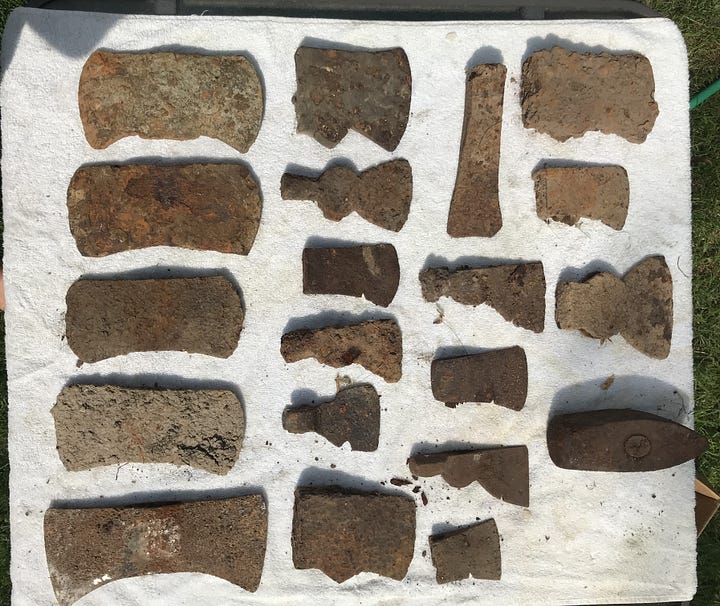
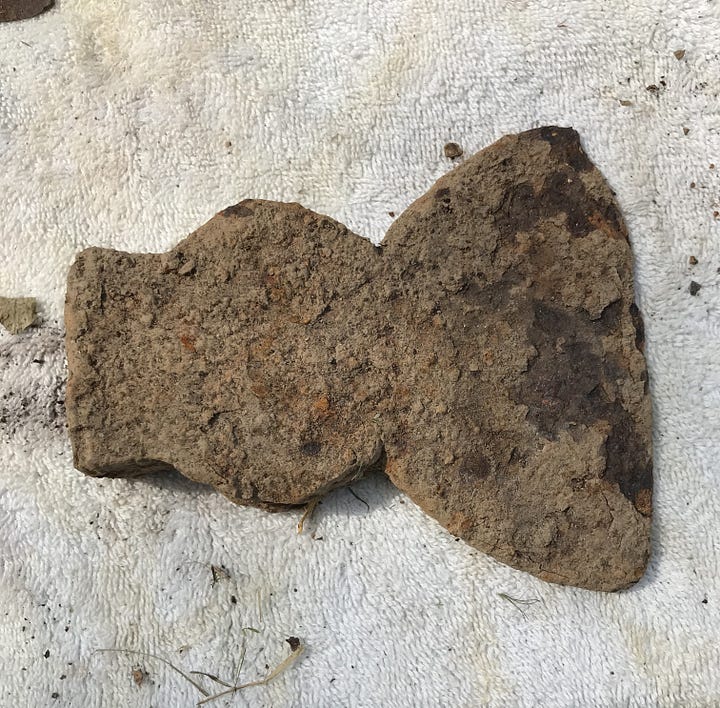
Last winter, I found a two-person cross-cut saw blade. It was in decent shape, but kind of bulky at six feet long, and I was hundreds of yards away from my truck. I wasn’t sure if I wanted to keep it. I didn’t know what I would do with it, but I decided to lug it out and bring it home. I cleaned it up with a grinder and came up with this idea:
My first attempt was no good because I spelled it “The Cosies” (just kidding). Based on other finds nearby, I estimate it to be from the 1930’s.
Last week, I was detecting around an old homesite and found this complete andiron and part of its mate. Just for clarity, andirons are a pair of metal brackets used to support logs in a fireplace, allowing air to circulate underneath, improving combustion. I’m hoping to find the missing piece in the future.
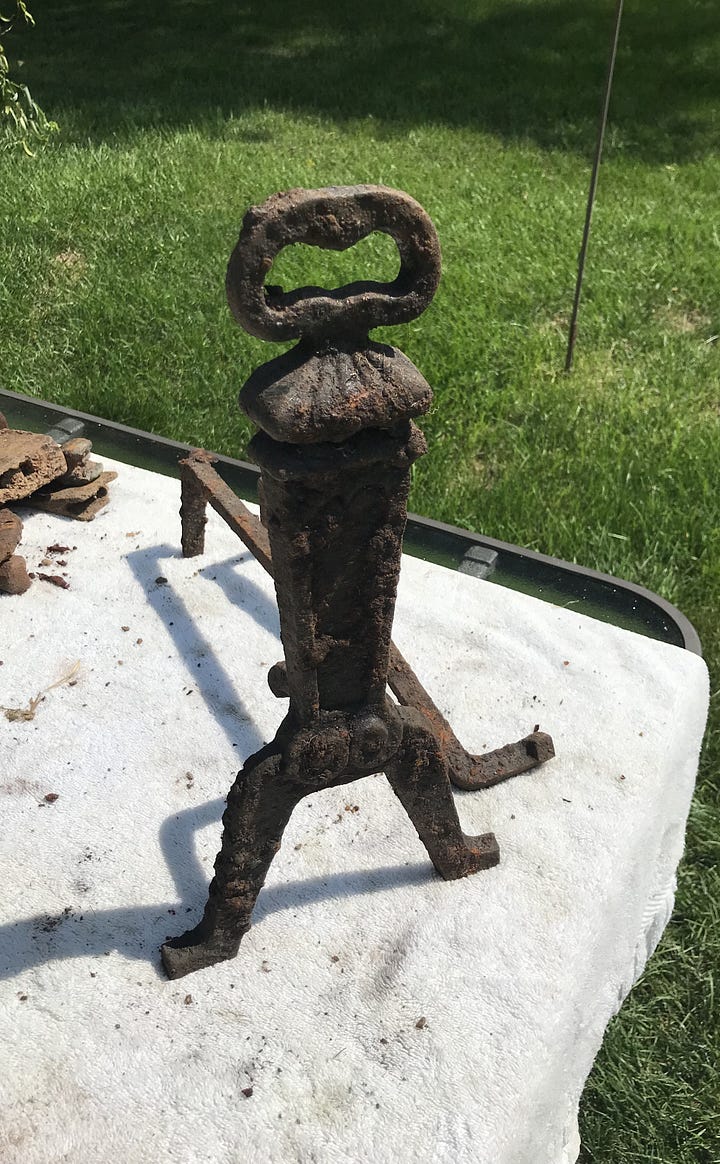
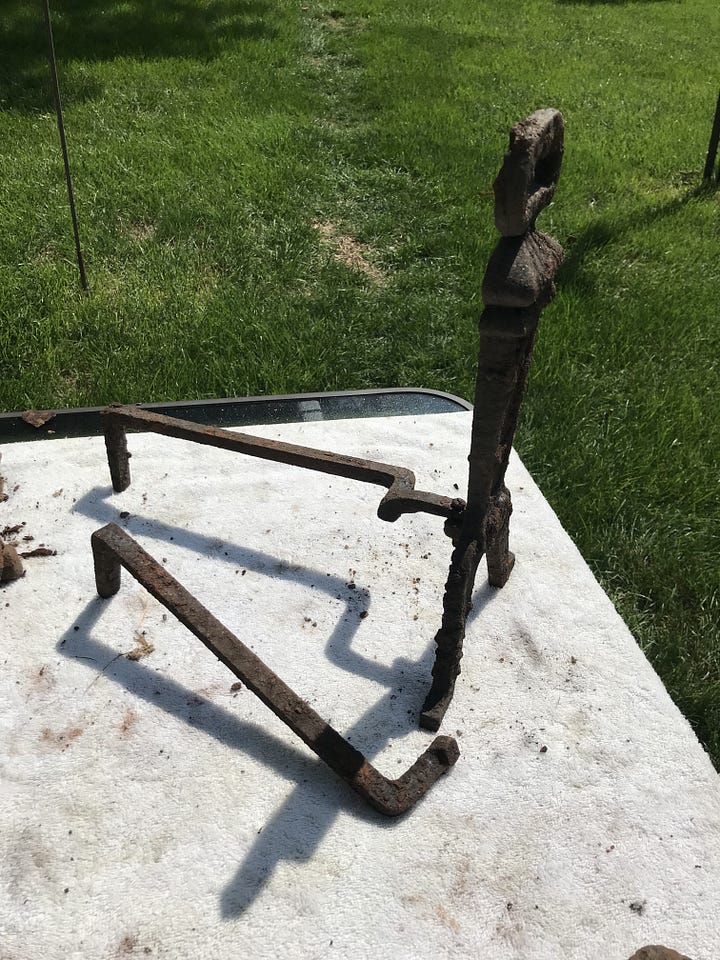
I do a lot of detecting in State Forests (I have permission) and most of the time I don’t find much more than bullets, shell casings, and shotgun head stamps (the brass base of the shell). I like to think even if I don’t find much, I’m getting exercise and fresh (reasonably) air, which brings me to the final item in today’s blog: this old meat cleaver, or what I like to call “The DeNogginator”. Unfortunately, I forgot to take a before picture, but believe me, it was very rusty. That’s where I was when I found the cleaver. I couldn’t identify any old homesites or other signs of human activity anywhere in the area. It would be nice to know how it ended up there. I’m deciding if I want to put a wood handle on it, or display it just like it is.
On another note, sometimes I will find the proverbial “needle in the haystack.” A couple of weeks ago I was swinging in the middle of nowhere and found a 1910 silver dime.




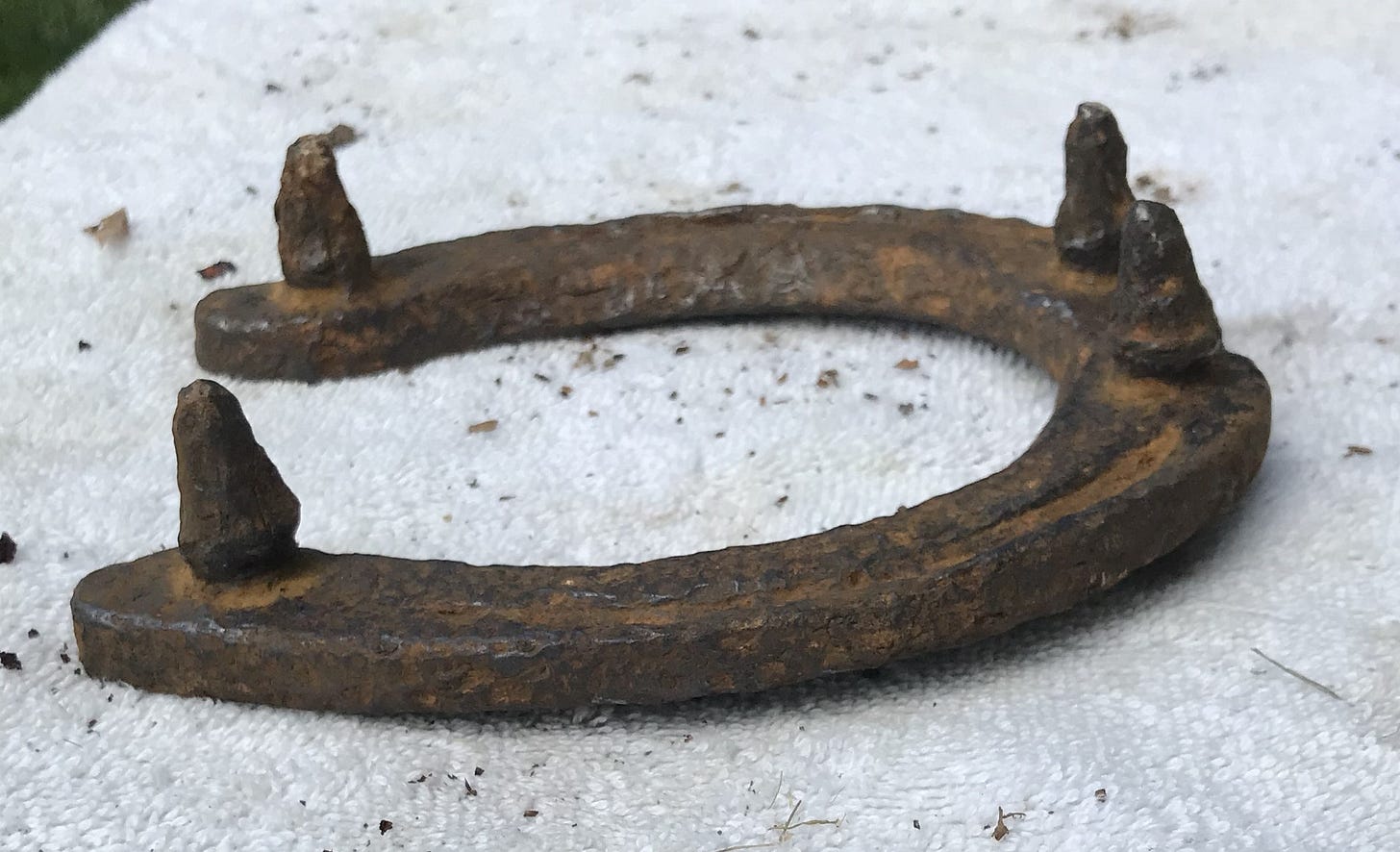

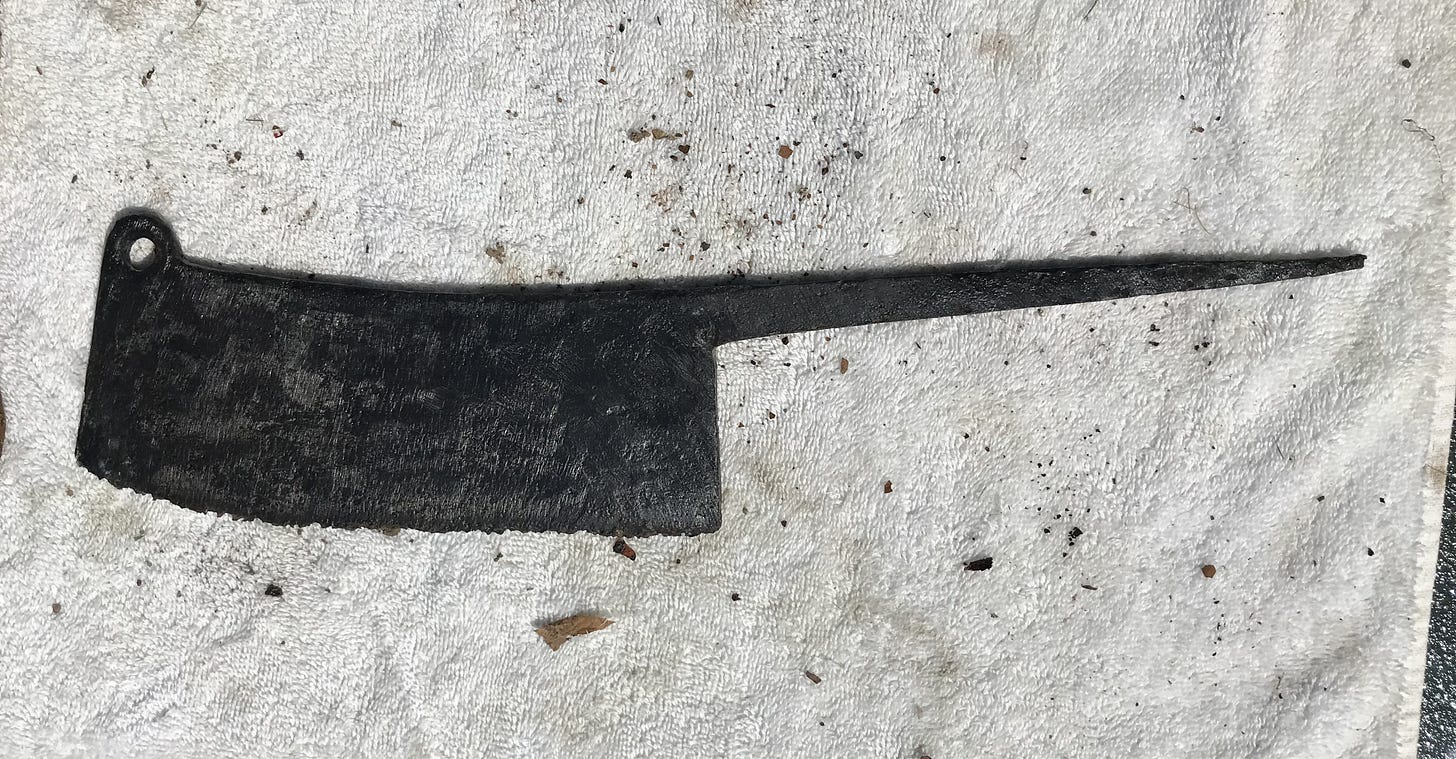
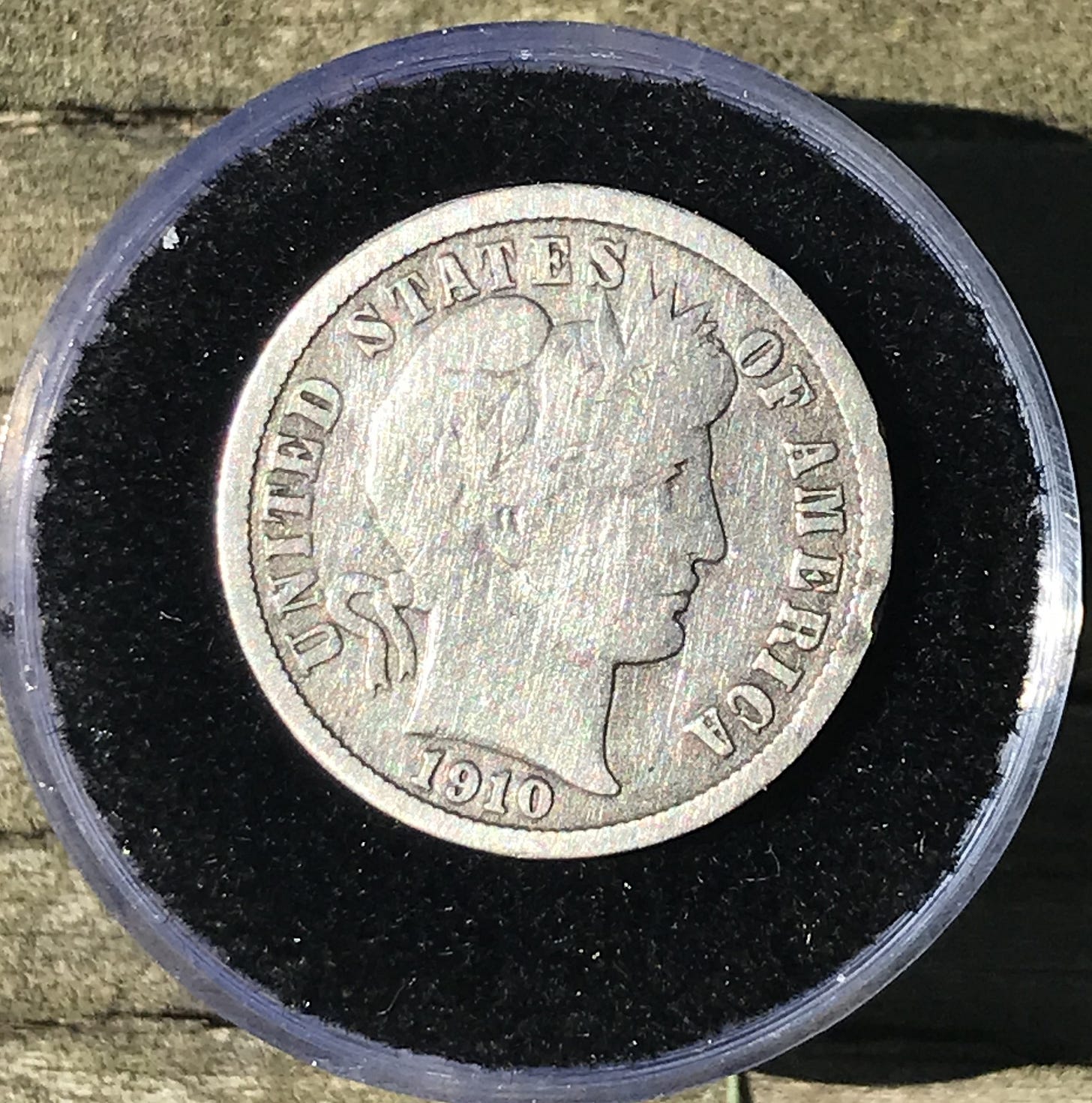
Another good one! I like it when we get to see behind the curtain of metal detecting … like how the detector works to filter out small iron noise.